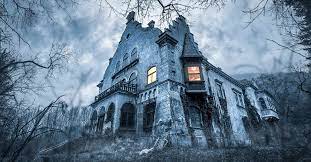How to Write a Mystery Story (with Examples)

Crafting a captivating mystery story can be an exciting and rewarding experience for writers of all levels. By following these steps and using some well-known examples as guidance, you can create your own thrilling tale that keeps readers on the edge of their seats.
1. Create an Intriguing Premise
An engaging mystery begins with an intriguing premise that hooks the reader. It can be a simple question or a complex situation, but it should pique the reader’s curiosity. For example, in Agatha Christie’s “Murder on the Orient Express,” the premise revolves around a murder committed aboard a train filled with passengers from various backgrounds.
2. Develop Interesting Characters
Characters are crucial in driving your plot forward. Create dynamic characters with unique backgrounds, quirks, and motivations to keep readers invested in your story. In Sir Arthur Conan Doyle’s Sherlock Holmes stories, Holmes’s keen intellect and enigmatic personality have captivated readers for over a century.
3. Establish a Strong Setting
The setting is essential to create the right atmosphere for your mystery. Choose a location that supports your story’s tone and enhances its suspenseful elements. For instance, consider the isolated country mansion in Agatha Christie’s novel “And Then There Were None.”
4. Plant Clues and Red Herrings
Mysteries rely on clues to propel the story and keep readers guessing. Strategically spread hints throughout your narrative while also including red herrings – false leads meant to mislead or distract the reader from the real answer. Edgar Allan Poe’s “The Purloined Letter” is an excellent example of intricate clue placement.
5. Craft a Tight Plot
A good mystery story keeps readers guessing until the very end through well-paced twists and turns. Organize your plot by outlining key events or laying out index cards detailing each scene’s purpose. This method ensures seamless transitions between scenes and helps maintain suspense. Raymond Chandler’s “The Big Sleep” is an example of a tightly plotted mystery.
6. Build Suspense and Tension
To keep readers hooked, develop suspense and tension throughout your story using cliffhangers, time restraints, or moral dilemmas. Take cues from writer Daphne du Maurier in her novel “Rebecca,” where tension builds steadily as the protagonist unravels the truth about her enigmatic husband and his deceased wife.
7. Reveal the Solution
At the climax of your mystery, reveal the solution to your riddle or puzzle. This resolution should be both surprising and logical, ensuring that all loose ends are tied up and clues are explained. Agatha Christie’s “The Murder of Roger Ackroyd” is famous for its unexpected yet satisfying twist ending.
8. Revise and Edit Your Manuscript
Finally, revise and edit your manuscript for clarity, coherence, and consistency. Rework any confusing sections or extraneous details to ensure your story flows smoothly while maintaining its suspenseful tone.
In conclusion, creating a captivating mystery story requires an intriguing premise, complex characters, atmospheric setting, strategic clues, tight plotting, built-up suspense, a satisfying resolution, and careful editing. Like the classics by Agatha Christie, Sir Arthur Conan Doyle, and Edgar Allan Poe, following these steps can help you create a mystery that will entrance readers from beginning to end.






